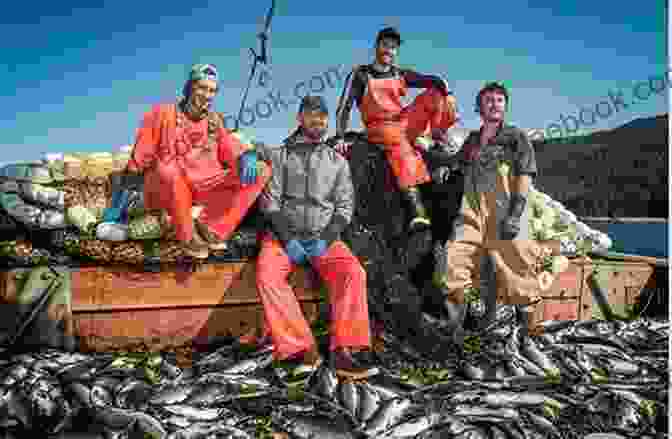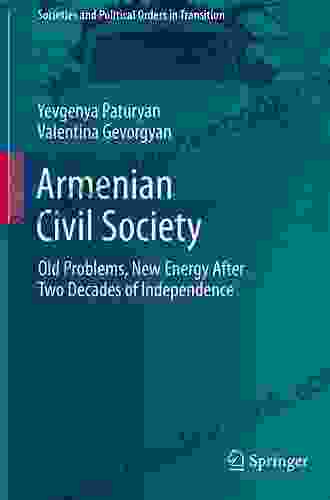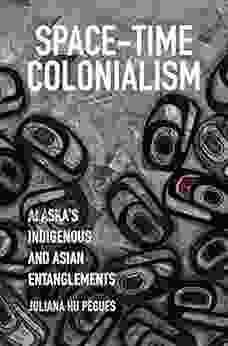Entangled Histories: Critical Indigeneities in Alaska's Indigenous-Asian Encounters

The vast and remote landscapes of Alaska have long been home to diverse Indigenous communities, who have forged a profound relationship with the environment and established intricate cultural systems. However, Alaska's history has also been marked by significant encounters with Asian peoples, leading to a complex and dynamic interweaving of cultures and perspectives. This article aims to examine the entangled histories of Indigenous and Asian communities in Alaska, exploring the ways in which these interactions have shaped the region's social, cultural, and economic fabric.
Indigenous Sovereignty and Trans-Pacific Connections
Alaska's Indigenous peoples have maintained a deep connection to their ancestral lands, exercising sovereignty and self-governance for centuries. Their traditions, languages, and spiritual beliefs have been passed down through generations, forming the basis of their distinct cultural identities. However, the arrival of European colonizers and the subsequent influx of Asian immigrants posed challenges to Indigenous autonomy and cultural preservation.
4.8 out of 5
| Language | : | English |
| File size | : | 16066 KB |
| Text-to-Speech | : | Enabled |
| Screen Reader | : | Supported |
| Enhanced typesetting | : | Enabled |
| Word Wise | : | Enabled |
| Print length | : | 223 pages |
In the 17th century, Russian fur traders established a presence in Alaska, leading to conflicts with Indigenous communities and the imposition of colonial rule. The United States purchased Alaska from Russia in 1867, further entrenching American dominance and leading to the marginalization of Indigenous peoples. Despite these external pressures, Indigenous communities have continued to resist assimilation and assert their rights to self-determination. The Alaska Native Claims Settlement Act of 1971 recognized the land and resource rights of Alaska Natives, albeit with limitations and compromises.
Throughout history, Indigenous communities in Alaska have engaged in extensive trade and cultural exchanges with Asian peoples across the Pacific Rim. Archaeological evidence suggests that Indigenous groups in the Arctic and sub-Arctic regions have had contact with Siberian populations for thousands of years. These interactions facilitated the exchange of goods, ideas, and cultural practices, contributing to the development of distinct Indigenous societies in Alaska.
Asian Migration and Economic Transformations
The late 19th and early 20th centuries witnessed a significant influx of Asian immigrants to Alaska, primarily from China, Japan, and the Philippines. These immigrants were often drawn by the promise of economic opportunities, particularly in the fishing and mining industries. Their arrival had a profound impact on Alaska's demographics and social landscape.
Chinese immigrants played a crucial role in the development of the fishing industry in Alaska. They established canneries and provided labor for fishing vessels, contributing to the economic growth of the territory. However, they also faced discrimination and violence, leading to the Chinese Exclusion Act of 1882, which restricted Chinese immigration to the United States and its territories.
Japanese immigrants also played a significant role in Alaska's economy, particularly in the salmon fishing and canning industries. They established fishing companies and developed innovative fishing techniques, contributing to the development of a lucrative industry. Like Chinese immigrants, they faced discrimination and economic competition, which limited their economic mobility and social integration.
Filipino immigrants arrived in Alaska in the early 1900s, primarily to work in the fishing and cannery industries. They faced similar challenges to Chinese and Japanese immigrants, including discrimination and limited economic opportunities. However, they also formed vibrant communities in Alaska's coastal towns and cities, contributing to the region's cultural diversity.

Cultural Intersections and Hybrid Identities
The encounters between Indigenous and Asian communities in Alaska have led to a process of cultural exchange and hybridity. Indigenous peoples have adopted certain Asian cultural practices and technologies, while Asian immigrants have incorporated Indigenous knowledge and traditions into their own lives. This cultural interweaving has created unique and dynamic communities in Alaska.
For example, in the coastal regions of Alaska, Indigenous communities have adopted Asian fishing techniques and boat designs, while Asian immigrants have learned from Indigenous knowledge of local ecosystems and fishing grounds. This exchange has resulted in a hybrid fishing culture that combines the best of both worlds.
In urban centers such as Anchorage and Juneau, Asian immigrants have established their own cultural enclaves, while also participating in broader Alaskan society. They have opened restaurants, shops, and community centers that showcase their cultural heritage while also engaging with Indigenous and non-Indigenous communities. This cultural exchange has fostered a sense of shared identity and belonging in Alaska.
Critical Indigeneities and Indigenous Resistance
Despite the challenges and complexities of Indigenous-Asian encounters in Alaska, Indigenous communities have maintained their distinct cultural identities and traditions. They have resisted assimilation and asserted their sovereignty, while also engaging in dialogue and collaboration with Asian communities.
Critical Indigeneity is a framework that emphasizes the complex and dynamic nature of Indigenous identities, recognizing the ways in which Indigenous peoples have adapted and resisted colonial and post-colonial power structures. In Alaska, critical Indigeneity provides a lens through which to understand the ongoing struggles and resilience of Indigenous communities as they navigate the complexities of modern society.
Indigenous resistance in Alaska has taken many forms, including land claims activism, the revitalization of Indigenous languages and cultural practices, and the establishment of Indigenous-owned businesses and institutions. This resistance has contributed to the preservation and strengthening of Indigenous communities, while also challenging the dominant narratives that have historically marginalized and oppressed them.
The entangled histories of Indigenous and Asian communities in Alaska offer a rich and complex tapestry of cultural exchange, economic transformation, and Indigenous resistance. The encounters between these diverse groups have shaped the region's social, cultural, and economic landscape, creating a unique and vibrant society that has been shaped by both past and present interactions.
Critical Indigeneity provides a framework for understanding the ongoing challenges and resilience of Indigenous communities in Alaska as they navigate the complexities of modern society. By recognizing the ways in which Indigenous peoples have adapted and resisted colonial and post-colonial power structures, we can better appreciate their ongoing struggles and contributions to Alaskan society.
As Alaska continues to grapple with issues of social and economic equity, it is essential to acknowledge the historical and ongoing entanglements between Indigenous and Asian communities. By valuing the diversity and contributions of all its people, Alaska can build a more inclusive and just society for future generations.
4.8 out of 5
| Language | : | English |
| File size | : | 16066 KB |
| Text-to-Speech | : | Enabled |
| Screen Reader | : | Supported |
| Enhanced typesetting | : | Enabled |
| Word Wise | : | Enabled |
| Print length | : | 223 pages |
Do you want to contribute by writing guest posts on this blog?
Please contact us and send us a resume of previous articles that you have written.
 Novel
Novel Page
Page Chapter
Chapter Text
Text Library
Library E-book
E-book Magazine
Magazine Sentence
Sentence Bookmark
Bookmark Shelf
Shelf Foreword
Foreword Preface
Preface Annotation
Annotation Footnote
Footnote Manuscript
Manuscript Scroll
Scroll Tome
Tome Bestseller
Bestseller Classics
Classics Library card
Library card Narrative
Narrative Autobiography
Autobiography Memoir
Memoir Reference
Reference Encyclopedia
Encyclopedia Dictionary
Dictionary Thesaurus
Thesaurus Character
Character Librarian
Librarian Borrowing
Borrowing Stacks
Stacks Periodicals
Periodicals Reserve
Reserve Rare Books
Rare Books Interlibrary
Interlibrary Literacy
Literacy Thesis
Thesis Dissertation
Dissertation Theory
Theory Textbooks
Textbooks Jamie Veronica
Jamie Veronica John A Burns
John A Burns Steve Striffler
Steve Striffler Michael W Spicer
Michael W Spicer Ellis Cose
Ellis Cose Linda Nagata
Linda Nagata Elizabeth Buchanan
Elizabeth Buchanan Domitilla Sagramoso
Domitilla Sagramoso David Rosenmann Taub
David Rosenmann Taub Cassandra Robbins
Cassandra Robbins Saumya Dave
Saumya Dave Eric A Posner
Eric A Posner Alissa Quart
Alissa Quart William Leavitt
William Leavitt Leisure Arts
Leisure Arts J P Brindley
J P Brindley Stephanie Foxe
Stephanie Foxe Christopher Anderson
Christopher Anderson Norman Friedman
Norman Friedman J L Patrick
J L Patrick
Light bulbAdvertise smarter! Our strategic ad space ensures maximum exposure. Reserve your spot today!

 Trevor BellTeaching Phonics and Word Study in the Intermediate Grades: A Comprehensive...
Trevor BellTeaching Phonics and Word Study in the Intermediate Grades: A Comprehensive...
 David Foster WallaceOld Problems, New Energy: After Two Decades of Independence, Societies Are...
David Foster WallaceOld Problems, New Energy: After Two Decades of Independence, Societies Are... Bobby HowardFollow ·17.2k
Bobby HowardFollow ·17.2k Oliver FosterFollow ·5.8k
Oliver FosterFollow ·5.8k Alvin BellFollow ·5.9k
Alvin BellFollow ·5.9k Tim ReedFollow ·5.9k
Tim ReedFollow ·5.9k Greg CoxFollow ·8.5k
Greg CoxFollow ·8.5k Anthony WellsFollow ·14.4k
Anthony WellsFollow ·14.4k Jorge AmadoFollow ·14.8k
Jorge AmadoFollow ·14.8k Charles DickensFollow ·18.6k
Charles DickensFollow ·18.6k

 Brian Bell
Brian BellClassic Festival Solos Bassoon Volume Piano...
The Classic Festival Solos Bassoon Volume...

 Aubrey Blair
Aubrey BlairUnveiling the Courage: Insurgent Women Female Combatants...
In the face of armed...

 Jan Mitchell
Jan MitchellFor The Liberty Of Texas: The Lone Star State's Fight for...
The Republic of Texas was a sovereign state...

 Edgar Allan Poe
Edgar Allan PoeVisible, Explainable, Trustworthy, and Transparent...
What is VET2...
4.8 out of 5
| Language | : | English |
| File size | : | 16066 KB |
| Text-to-Speech | : | Enabled |
| Screen Reader | : | Supported |
| Enhanced typesetting | : | Enabled |
| Word Wise | : | Enabled |
| Print length | : | 223 pages |












